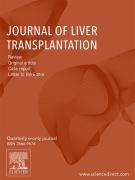Pure living donor liver transplant for Liver and Polycystic Kidney disease, outcomes and experiences from an Asian transplant unit - 11/04/25

Highlights |
• | This study presents one of the largest single-center case series of isolated LDLT for PLD associated with polycystic kidney disease (PCKD). |
• | LDLT offers excellent long-term survival (5-year survival of 88.9%) with acceptable perioperative morbidity in patients with PLD. |
• | Median explanted liver weight was notably high (6950g), highlighting the technical complexity of surgery in PLD. |
• | Pre-existing chronic kidney disease (CKD) was associated with early post-transplant renal deterioration and need for renal replacement therapy (RRT). |
• | No major complications or mortality were observed among living liver donors, supporting the safety of LDLT in this context. |
• | The study highlights the importance of tailored surgical strategies, including caval reconstruction, in managing massive polycystic livers. |
• | Utilization of combination immunosuppression (Tacrolimus + Everolimus) may support renal function preservation post-transplant. |
Abstract |
Background |
Adult polycystic liver disease (PLD) is a rare genetic disorder. In instances of intractable symptoms from mass effect or recurrent cyst-related complications, liver transplant affords the best therapeutic solution.
Methods |
This is a retrospective case series of patients who underwent isolated pure living donor liver transplantation (LDLT) for adult polycystic kidney disease (PCKD) associated PLD from 2012- 2022. Short-term peri-operative outcomes including renal sequelae and long-term survival were analysed.
Results |
From 2012-2022, a total of 9 patients underwent LDLT for PLD. The median explanted liver weight was 6950g (IQR 5653-7700) with a median blood loss of was 5450mls (IQR 2400-9875). There was 1 mortality due to acute antibody-mediated rejection (11.1%). Of the four patients with existing chronic kidney disease (CKD), 2 (50%) developed end-stage renal failure and was renal replacement therapy (RRT) dependent at 3 months. The median overall survival in our series was 63.9 months with a 5-year survival of 88.9%.
Conclusions |
Despite its technical challenges, LDLT affords an excellent long-term prognosis with acceptable major morbidity. Pre-operative CKD appears to be a risk factor for early renal deterioration.
Le texte complet de cet article est disponible en PDF.Keywords : Polycystic liver disease (PCLD), Polycystic kidney disease (PCKD), Case series, Living donor liver transplant, chronic kidney disease (CKD), End-Stage Renal Failure (ESRF)
Plan
Bienvenue sur EM-consulte, la référence des professionnels de santé.

